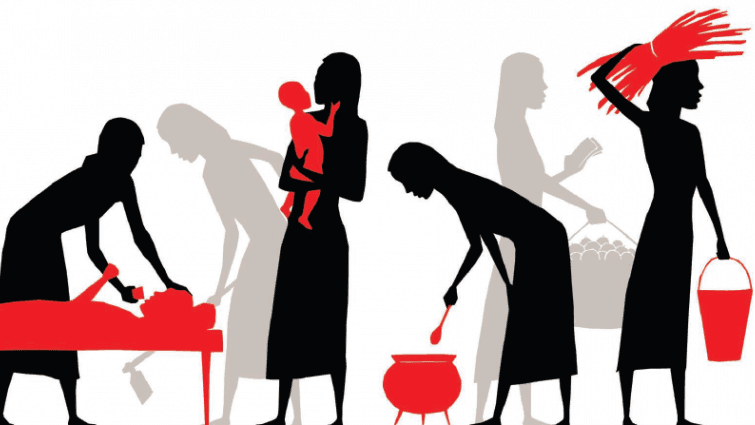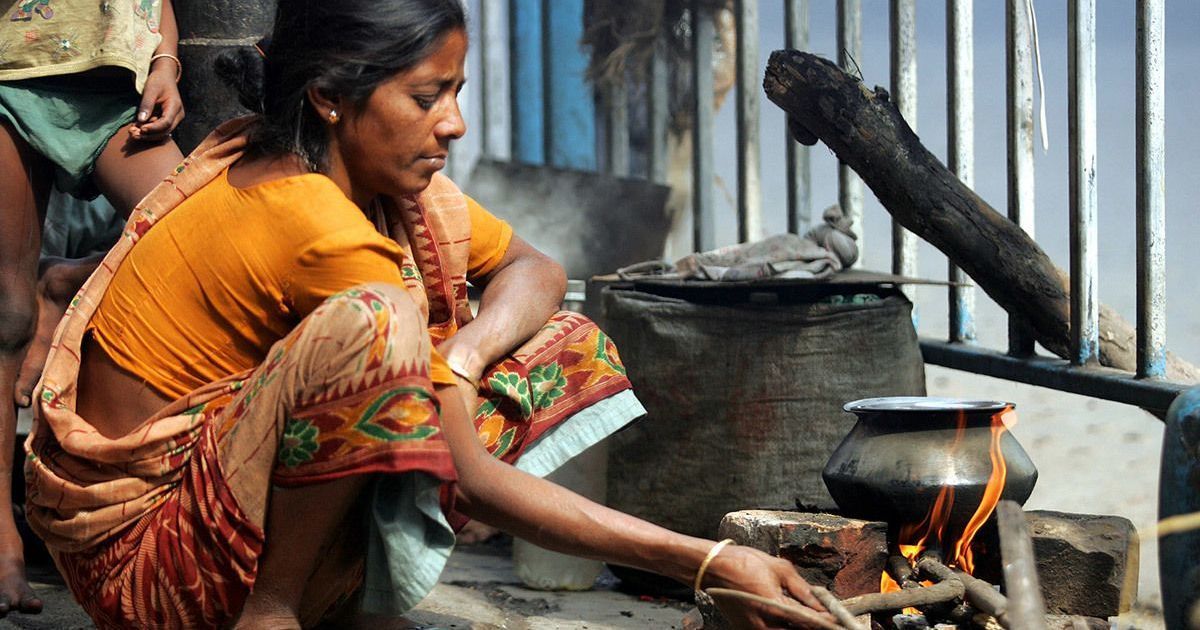Economic Globalization and Women: Issues and Concerns- Part One (1991-2025)

In this first part of the article, Prof. Vibhuti Patel, former Professor at the Advanced Centre for Women’s Studies, Tata Institute of Social Sciences, and former Head of the Economics Department at SNDT Women’s University, examines how neoliberal globalisation has deepened inequality and widened gender gaps in India. With over four decades of research on women’s work, human rights, and gendered economics, she draws on data and feminist economic analysis to show how financial liberalisation, privatisation, and predatory capitalism have eroded economic sovereignty, displaced vulnerable populations, and intensified the precarity of women workers, particularly from rural, Dalit, and working-class backgrounds.
Introduction
Globalisation (G) has accentuated inequality and poverty and has had a massive influence on the urban, rural and dalit /tribal poor women as paid, underpaid and unpaid workers of the economy. As homemakers, the poor women have shouldered disproportionate (triple) burden of G due to commercialisation of day-to-day survival needs such as drinking water, degradation of environment and erosion of public health services and cash controlled privatised education by corporate driven G. Expensive transport, dismantling of public distribution system that provided grains, cooking fuel, cloth material, soap, etc. have made lives of millions of workers, especially poor women full of hardship. Neo-liberal policies guiding economic G have reduced the chances of quality education, nutritious diet and healthy growth of poor people’s children. Laissez-faire in the labour market has threatened the employment opportunities of adult men workers and married women. During the last decade, there has been a drastic increase in child labour. Macroeconomic stabilisation policies, also known as Structural Adjustment Programmes- devaluation, deregulation, deflation, denationalisation, have accentuated human miseries and escalated economic inequalities in which poor women have suffered the most. Mass unemployment, food price volatility due to liberalisation of agriculture, galloping inflation, privatisation of education and health care affect the common masses-especially women, children and the elderly, the most.
In the post pandemic period, market fundamentalism of neoliberal economic globalisation, religious chauvinism and cultural nationalism, financialisation of world economy, right wing sectarian political leadership both locally and globally, valorisation of toxic patriarchy and hyper masculinity with hyper nationalism and jingoism by globally controlled media barons has intensified complexities in governance, polity, livelihood and survival struggles in the midst of climate change, for the mass of rural and urban workers, peasants, forest dwellers (adivasis), fisher folks, petty traders, small scale industrialists, sexual minorities and women.
Predatory Role of Financial Capital
Global financial networks of global economic oligarchies are pressurising the developing countries by hook or crook to surrender their economic sovereignty for the super profits of Transnational corporations and Multinational corporations controlled by predatory capitalism. Financial liberalisation has greatly eroded regulatory structures and mechanisms, resulting in a nexus of financial capital and politicians robbing citizens of their savings, earnings, assets and basic survival needs. Financial scams by nationalised banks, Non-Banking Financial Company, cooperative Banks and Chit Fund Societies have become an order of the day. On the one hand, when farmers are committing suicides due to their inability to pay debt, billionaires roam around in their luxuries even after being caught for financial scams. The super-rich have impunity for their economic crimes as the entire criminal justice system subserves their interest (Patel, 2009).

Precarity of Women Workers
As per Arjun Sengupta Committee Report, almost 400 million people - more than 85% of the working population in India - work in the unorganised sector. Of these, at least 120 million are women. The recent Arjun Sengupta Committee report is a stark reminder of the huge size and poor conditions in this sector. So far as the service sector is concerned, official jubilation focuses on Indian women in the workforce experiencing the third state of U-shape curve phenomenon needs serious examination due to an increase in work participation of women in the service sector, mainly unducares women in it and less educated women in domestic work. Women in these expanding sectors are “paid for at an extraordinarily low rate. Women are also over-represented among the more vulnerable categories of informal casual work.” NSS 68th Round Survey reveals a significant reduction in work participation of women. Working Group of the National Advisory Council (NAC) on Unorganised Workers Social Security Act 2008 stated that Unorganised sector workers, a large chunk of which is women, constitute 93 per cent of the workforce. The sector contributes to an estimated 60 per cent of GDP, 55 per cent of national savings and 47 per cent of all exports.
The Impact of Globalisation on Men and Women Workers in India
Workers of the developing countries are seen as the most flexible of the world's labour force. The lower supply price of these workers provides a material basis for the induction of poor working-class urban labour into export industries such as electronics, garments, sports goods, toys and agro-industries. In the export-oriented industries, the production of leather goods, toys, food products, garments, diamond and jewellery, piece-rate female labour is employed, working from sweatshops or from home. Outsourcing is the name of the game. The relationship between the formal sector and the decentralised sector is a dependent relationship where the formal sector has control over capital and markets, and the 'informal' sector works as an ancillary. In India, 93% of the urban and rural poor work in the decentralised sector, which has a high degree of labour redundancy and obsolescence. These workers have less control over their work and no chance for upward mobility because of temporary, routine and monotonous work.
Only 7 % of the total workforce in India is in the organised sector. Women constitute only 14% of the total employment in the organised sector. It is concentrated in Maharashtra, Delhi, West Bengal, Uttar Pradesh and Tamil Nadu. In the urban areas, the work participation rate of women in the tertiary sector, i.e service sector, increased from 37.6 % in 1983 to 52.9 % in 1999. (Economic Survey, 2002, GOI). Even here, the majority of women workers are employed in domestic work.

Wage Differential (WD)
Perpetuation of Wage Differential by economic G is such that for identical tasks done by both men and women, women are paid less. And women are also confined to relatively inferior tasks and casual work. The Trans National Corporations (TNCs) and Multi National Corporations (MNCs) are cashing on patriarchal attitudes and myths about women’s low productivity. Effects of WD have been the subordination of women, son preference, men being treated as a “breadwinner” and a Head of the Household (HoH). Affirmative Action to remove these prejudices is a need of an hour. Both the state and the social action groups need to join hands to provide gender justice in the labour market. Labour, factor and product markets also differentiate on the basis of race, religion, caste and ethnicity. Women are given low and unequal wages. Sexual harassment is common but unarticulated due to fear of loss of employment. There is no question of paid leave and maternity benefits. The use of cheap labour in the unorganised sector is the major source of profit for employers and contractors who exploit the workers' lack of collective bargaining power and state regulation.
Primitive Accumulation of Capital for the Expansion of World Capitalism
A marked feature of neo liberal policy is enlightened self-interest activated through market forces in the era of economic Globalisation (G). G rides on the back of the cheap labour of the minorities, women and children. Landscape of urban and rural informal sector in dozens of South Asian (India, Pakistan, Bangladesh, Srilanka, Nepal) and South East Asian (Thailand, Indonesia, Philippines, Malaysia) countries, Indochina (Laos, Kampuchea and Vietnam) and China is flooded with sweatshops, ghetto labour markets and stigmatised migrant workers. ASEAN countries have discussed the establishment of 200 Special Economic Zones (SEZs) that would ensure the flexibilisation of the labour force to attract Foreign Direct Investment (FDI).
During the 1990s, employment of middle-aged men and women decreased, and employment of adolescent girls and child labour increased. Women were and are given less skilled and underpaid jobs. Budgetary cuts for balwadis and crèches enhanced the burden of poor working women. FTZs and EPZs thrive on young women’s super-exploitation. The employers overlook occupational health hazards.

Arjun Sengupta Committee Report (2006)
The Report is a stark reminder of the huge size and poor conditions in the informal sector. The Report has revealed that in India, almost 370 million people - more than 85% of the working population in India- work in the unorganised sector. Of these, at least 120 million are women. They contribute around 60% to the national economic output of the country. Around 28 crore people work in the rural sector, of which an estimated 22 crores are in the agricultural sector. Around 6 crores are in urban areas. Women make up 11-12 crores, of which around 8 crores are engaged in agriculture.
In terms of overall employment, the Committee's report estimates that over 92% of the country's working population is engaged in the unorganised sector, and that the majority of women workers also work in this sector. Yet, in spite of their vast numbers and their substantial contribution to the national economy, they are amongst the poorest sections of our population. It is therefore imperative that urgent steps are taken to improve their condition -this is the Constitutional obligation of those who govern the country.
So far as the service sector is concerned, official jubilation focuses on Indian women in the workforce experiencing the third stage of U-shape curve phenomenon. This needs serious examination, as the increase in work participation of women in the service sector is mainly due to highly demanding care work done by less educated women in domestic work. Women in these expanding sectors are “paid for at extraordinarily low rates. Women are also over-represented among the more vulnerable categories of informal casual work.”
Labour Processes in the Unorganised Sector
Informal sector work is characterised by low wages that are often insufficient to meet minimum living standards, including nutrition, long working hours, hazardous working conditions, lack of basic services such as first aid, drinking water and sanitation at the worksite, etc. Even a cursory glance will identify several such occupations, including agricultural labour, construction workers on building sites, brick-kiln workers, and workers in various service industries ranging from transport and courier services to the hospitality industry.
A large 'invisible' section of workers are employed in what is called 'home-based work' where, typically, workers use their own premises to do piece-rated work. This not only includes traditional crafts, handloom weaving, and beedi rolling, but also more modern industries such as electronics. Both formal and informal surveys reveal that, on average, unorganised sector workers do not earn more than Rs 30-50 per day. Some may appear to earn more, but the work is often seasonal, and the total earnings amount to roughly the same. In order to earn more, workers work longer and harder. This is particularly the case for self-employed persons such as vendors, rag pickers, and petty traders, who make their services available from the early hours of the morning to late at night, in all types of inhospitable working conditions.

The NSS 66th Round Survey revealed a significant reduction in work participation of women in 2011. Working Group of the National Advisory Council (NAC) on Unorganised Workers Social Security Act 2008 stated that unorganised sector workers, a large chunk of which is women, constitute 93 per cent of the workforce. The sector contributes to an estimated 60 per cent of GDP, 55 per cent of national savings and 47 per cent of all exports.
Officially much applauded recommendations of the Second Labour Commission, 2002, grant increased freedom to the employers to hire and fire workers at their whims and fancies. Moreover, there are massive cuts on financial allocations made for the social security measures by the state or employers. Recently, a movement for pensions for unorganised sector workers has been launched by social organisations. By and large, three types of issues of unorganised sector workers need to be addressed. One is the regulation of their working conditions, the second is provisioning for conditions in which they are unable to continue to work, such as old age and disability, and the third is measures to help them overcome situations of insecurity, such as major illnesses and the liability of losing employment or being laid off at the will of the employer, for which they have no legal remedy.
Forced Eviction to Accommodate Mega Projects
Capital-driven G has perpetrated tremendous human miseries by resorting to forced eviction of poor people from their dwelling place and workplace. The majority of the victims happen to be migrant informal sector workers. “Women...and other vulnerable individuals and groups suffer disproportionately from the practice of forced eviction. Women in all groups are especially vulnerable given the extent of statutory and other forms of discrimination which often apply in relation to property rights (including home ownership) or rights of access to property or accommodation, and their particular vulnerability to acts of violence and sexual abuse when they are rendered homeless." (UN Committee on Economic, Social, and Cultural Rights, Sixteenth Session, 1997)
The most disturbing aspect of G is displacement in the name of economic development. The very space to live and work is withdrawn from the urban poor in favour of shopping malls, car-parking spaces, commercial hubs and flyovers. Throughout the 20th century, the urban poor have been employed in food, beverage, tobacco, textiles, construction and wood/bamboo/cane and ceramics industries. Here too, they have been targets for retrenchment and forced to join the unorganised sector. The self-employed poor are squeezed out of the marketing, vending spaces because global traders have made local labour and skill obsolete.
Unequal Relationship between the Formal and the Informal Sector
A sizeable section of the informal sector goods and services are produced, frequently by means of contracting and subcontracting, which are paid for on piecework rather than a time-rate basis. Much of the economic activity in the informal sector is founded on capital from the formal sector, and given the low cost of labour and taxed minimally or not at all, returns to where it came from with tidy profit. Primitive accumulation in its classical form included plunder, slavery and colonialism, while primitive accumulation in the contemporary period includes sweatshops, labour concentration camps and criminalisation of the working class. In 1998, the world economy had 1.2 billion poor, i.e. population with an income of less than 1 dollar per capita per day. Gender division of labour results in women and children working in household units, as it allows “Flexible work”, as per the ILO study of 74 small and micro enterprises in 10 industrial clusters- engineering, ceramics, brass, carpets, bone and hoof, metal, block-printing, handloom- of North Indian states.
.jpg)
As a result of the Structural Adjustment Programme, sacked/ retrenched formal sector workers and employees are forced to work in the informal sector. Victims of the Voluntary Retirement Scheme have downward economic mobility. Rationalisation, mechanisation and automation have had labour-reducing implications. The introduction of the contract system in the public sector has institutionalised the neo-liberal dual economy model. A sectoral profile shows that most women workers in rural areas are in occupations such as weaving, handicraft, tailoring, forestry, the sale of fish, silk and poultry farming. In urban areas, the majority of women workers are either in the construction sector or in the nursing and teaching professions, working either on a contract basis or self-employed. The rise of the work participation rate is not a sign of empowerment but a sign of sheer helplessness and economic distress. Subcontracting, home-based production, family labour system, and the payment of wages on a piece-rate basis are jobs earmarked for women. According to the 2001 census, 19% of the total female workforce constitutes unpaid family labour. Even in a state like Kerala, only 17% of the women are gainfully employed.
